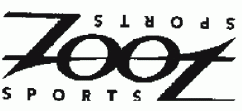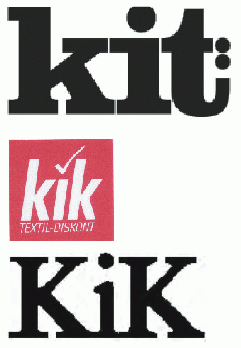Complementarity - what is it?
For many years now, the Office of Harmonization for the Internal Market (OHIM) has taken different factors into account when considering the similarity between two sets of goods/services.
One of the factors looked at by OHIM includes appraising the method of use of the goods or the services and the way that they are offered and whether they are in competition with each other or are complementary.
In its manual, OHIM offers the example of skis and ski boots, where it is evident that the goods are not the same in terms of their nature or method of use and nor are they in competition. However, in terms of their purpose, their distribution channels, their origin and the relevant public, the complementary nature of the character of these goods is also a consideration that would be taken into account.
OHIM defines ‘complementary’ as if there is a close connection between the goods or services, in the sense that one is indispensable (essential) or important (significant) for the use of the other.
This was confirmed in the judgment of Case T-74/10, Flaco (Para. 40).
The complementary relationship between goods/services can be functional. For example, in Case T-150/10 Loopia, the General Court held that there was a functional complementarity between the rental of data processing equipment and computers, along with computer programming when considered in connection with ‘hosting computer websites’. This was on the basis that the hosting services could not exist without some of the goods and services covered by the earlier marks.
OHIM’s guidance also confirms that even where a degree of complementarity may exist, this, in itself, cannot lead to the conclusion that there is similarity between two sets of goods/services. Other factors also have to be taken into consideration, such as origin and distribution.
OHIM also make the distinction that ‘complementarity’ is not the same as where goods/services are used in combination or together by choice or convenience.
An example is bread and butter. It is not essential that they are used in conjunction with each other.
Another area where a set of judgments have clarified the similarity of goods and services used together is that of aesthetic complementarity. In the judgement of the General Court in Case T-214/09 Cadenacor v Cor, the Court considered the similarity between ‘furniture’ and ‘carpets’. They concluded that they had the same purpose - for fitting out a home - and that the use would be the same. However, the Court concluded that, whilst there may be a common aesthetic function that leads consumers to use them together and to match them with each other “in order to create a harmonious atmosphere”, this in itself is insufficient to reach a conclusion that the goods are similar. In this case, similarity was found due to the fact that the goods are sold together in shops specialising in interior decoration and that the perception of relevant consumers is that they are offered by the same undertakings.
A number of cases have been decided the other way when looking at aesthetic complementarity, on the basis that no additional factors were found to support a claim of similarity.
Another example provided by OHIM is ‘handbags’ and ‘clothing’ which, whilst being closely connected, are not necessarily complementary, since one is not essential for the use of the other. Just because they are often used in combination does not, in itself, lead to similarity. In this particular instance, they usually are considered similar because they are often manufactured and distributed by the same, or linked, parties and bought by the same members of the public from retail outlets that often stock both items.
This example was mentioned in the recent decision issued by OHIM’s Fourth Board of Appeal on 9 August 2012 in Case R1119/2011-4, where the owner of the figurative mark Zoot Sports, and the word mark ZOOT, opposed the application to register ZOOSPORT.

The Board concluded that sports bags in class 18 are not complementary to clothing, footwear and headgear since their main purpose “is to accommodate sport utensils”. The Board went on to state that it is unlikely that the purchase of a sports bag will lead to a consumer being asked about the colour of the tracksuit or sneakers that they usually wear! In our opinion, the Board was wrong on this point given that sports bags and sports clothing are regularly produced by the same companies and sold side by side in outlets where the general public would often perceive there to be a connection.
The most recent case in the United Kingdom to consider the point of complementarity is the opposition to the stylised trade mark KIT by the owner of the earlier mark KIK.

The Hearing Officer in his decision on 12 September 2012 considered the opponent’s submission that ‘clothing’ is complementary to ‘cosmetics’ and, by extension, to the retailing of them and the provision of beauty treatments. Whilst the Hearing Officer accepted that there are companies engaged in both the provision of clothing and cosmetics, this does not make the goods and services complementary.
The Hearing Officer stated that the test is whether “there is a close connection between them, in the sense that one is indispensable or important for the use of the other”. He concluded that clothing and cosmetics do not meet these criteria.
We have noticed that arguments and submissions on whether goods and services are complementary to one another are becoming increasingly prevalent in contested proceedings, both in the UK and before OHIM. Both the UK IPO and OHIM are, quite rightly, of the view that the complementary nature of goods and services is only one factor that should be taken into account and that to succeed in showing complementarity requires a reasonably high threshold.